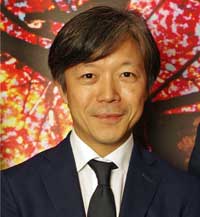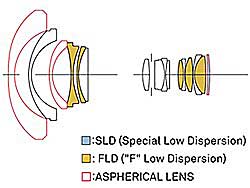PhotoCounter had the pleasure of interviewing Sigma CEO Kazuto Yamaki several years ago, and since then we have taken a keen interest in what he has to say.

Sigma has gone from strength to strength in the past few years under his guiidance. Its Art lenses have smashed the padlock Canon and Nikon have had on sales of professional standard lenses. It’s great Japanese accessory lens rival, Tamron, has followed suit with its premium SP lenses, and other accessory lens-makers seem to have also lifted their game in response.
A notable recent example of this market-disrupting innovation is the Sigma 85mm f1.4 Art, assessed by DxOmark, the leading independent lab for testing camera and lens image quality, as the best performing lens they have reviewed! Yet at $1699, it’s around $1000 cheaper than the equivalent – but poorer-performing – fast primes from Canon and Nikon.
In an industry which thrives on innovation, Sigma is delivering at a time when other supposed leaders seem less engaged.

At CP+ 2017 Kazuto Yamaki was interviewed by Amazon’s DP Review and Amateur Photographer (UK) We picked the bones from both for the following summary of what he had to say:
– He conceded that Sigma Art lenses were bulky and heavy, but said they were all about top optical performance and creating ‘lenses like no one else makes’, and that Sigma Art fans understood the reasons for and accepted the extra bulk;
– Another consequence of the ‘It’s all about performance’ philosophy is that there are no plans at present to produce optically stabilised Art lenses, as image stabilisation would further add to weight;
– There would be more Sony E-Mount lenses and more mirrorless lenses in general in Sigma’s future plans. Cine lenses were also in the pipeline;
– Sigma would have to introduce pro service systems to support the Art lens series – it already has this service in Japan;
– In the past 5 years Sigma has actually made fewer lenses, but more individual lens elements, as the focus moved to image quality;
– Sigma will continue with its Contemporary (lower cost, enthusiast) range, such as the new 100-400mm. Separately he mentioned a 70-200mm and a 14-24mm f2.8 as possible new enthusiast models;

– Sigma is able to produce high quality lenses at a lower cost than competitors because it has small dedicated teams, it has a quality-oriented (Japanese) factory and dedicated workforce, and it doesn’t buy in much in the way of high-cost, precision-made parts from third parties;
– The new 135mm f1.8 has resolving power to match a sensor of over 50 megapixels. (Begging questions about the utility of ever higher resolution sensors given the performance limitations of ‘lesser’ lenses);
– The new 14mm f1.8 is a revolutionary lens for astrophotographers as it will enable shooting at 15 sec, enabling the capture of stars with an undistorted circular shape;
– Kazuto Yamaki didn’t believe mirrorless cameras could ever match DSLRs for capturing moving subjects, but they had clear advantages in other areas: ‘I think the majority of interchangeable lens cameras will be mirrorless in the future, but this doesn’t mean DSLR will die.’
– Art lenses in future will have a dust and moisture resistant seal around the lens mount, with the new 24-70mm first off the rank;
– Mr Yamaki’s 13-year old son is lobbying for lower cost Sigma lenses: ‘He’s interested in buying a Sigma lens but says they’re just a bit too expensive for him.’





Be First to Comment